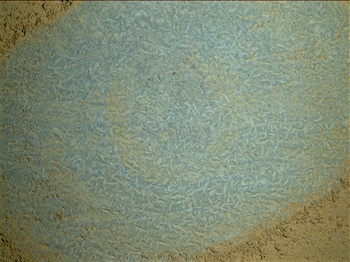 [Ed note: Post by MSL scientist Abigail Fraeman, NASA/JPL]
[Ed note: Post by MSL scientist Abigail Fraeman, NASA/JPL]
As Curiosity continues to mend, I’ve been looking forward to our next drill sample of gray rock. Some interesting features we’ve seen on Vera Rubin Ridge are small “swallowtail crystals” often associated with the boundary between gray and red rocks on the ridge top. In thinking about these features, I wanted to take the opportunity to reflect on past results from when Curiosity was just beginning to explore Mt. Sharp at the Pahrump Hills region. Readers of this blog may remember that back on sol 809, after we brushed away the dust on target “Mojave,” the team was surprised and excited to discover hundreds of millimeter-sized, rice-shaped crystals on its face. These crystals are geologic clues to what happened in the past. What were these unique features made of? How and when did they form?
Curiosity scientist Linda Kah and colleagues address these questions in a new paper available in the journal Terra Nova titled “Syndepositional precipitation of calcium sulfate in Gale Crater, Mars.” For this study, Kah and colleagues carefully studied the sizes, shapes, and orientations of the unusual crystals at Mojave and several nearby targets. They integrated these findings with the geologic setting, chemistry, and mineralogy of the Pahrump Hills area to infer the presence of shallow, salty, and sometimes ephemeral waters during this period in Gale’s history… [More at links]








